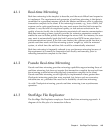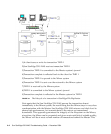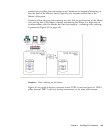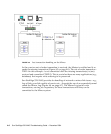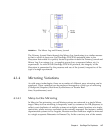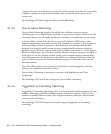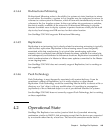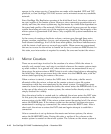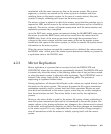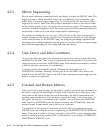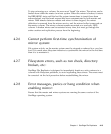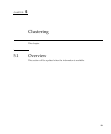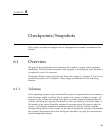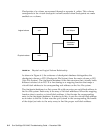
Chapter 4 StorEdge File Replicator 4-11
constituted with the same structure as that on the master system. File system
segments, or extents, are created on the mirror system in numbers and sizes
matching those on the master system. In the case of a master reboot, this state
consists of simply validating each extent on the mirror system.
The mirror volume is identical to that of the master, except that the partition type is
reported as NBD, and all access to the volume outside the mirror service is limited to
read-only. The mirror volume will remain unmounted until the entire creation and
replication processes have completed.
As in the INIT state, minor errors encountered during the MAKEPARTS state cause
the mirror to enter the RESET state, and severe errors drive the mirror into the
ERROR state. Some of the more severe errors that might be encountered are a
volume on the mirror system with the same name as that on the master system,
insufficient disk space on the mirror system, or failure to transfer file system extent
information to the mirror system.
When the mirror has been successfully created and/or validated, the mirror enters
the READY state. At this point, the master system determines whether to proceed to
a replication state or the INSYNC state.
4.2.2 Mirror Replication
Mirror replication is a process that is executed in both the REPLICATE and
OUTOFSYNC states; the two states are operationally identical. The REPLICATE state
is entered only when the mirror is first starting; either when it has just been created,
or when the master system is rebooted while replicating. The OUTOFSYNC state is
entered if the mirror cracks while in the sequencing phase. The process of
sequencing is explained further below.
During replication, all allocated disk blocks on the volume are copied directly from
the master to the mirror system. This process bypasses the file system transaction
mechanism normally used in volume read and write operations. Blocks are read
from disk and transferred to the mirror system, where they are written straight to
their home locations on disk. The mirror buffer is not used by the replication
process.
However, the mirror buffer is used by the master file system, during replication, to
store file system transactions that need to be transferred to the mirror system. The
master volume is live during replication; any changes to the volume must be stored
in the buffer until replication completes, at which time those changes are transferred
to the mirror system. It is very important that the mirror buffer is large enough to
store all transactions while the master is initially syncing itself with the mirror
system.



